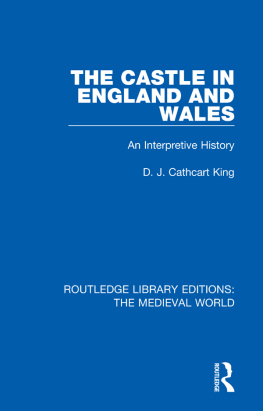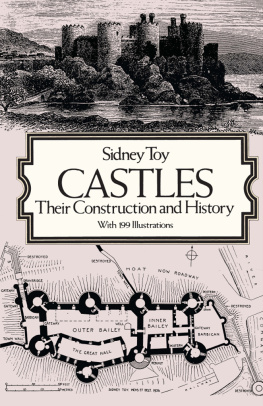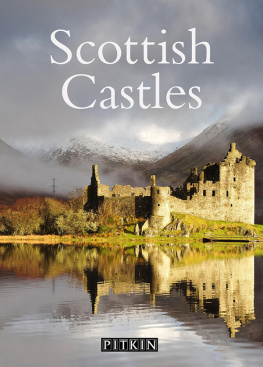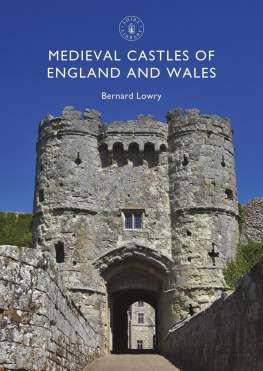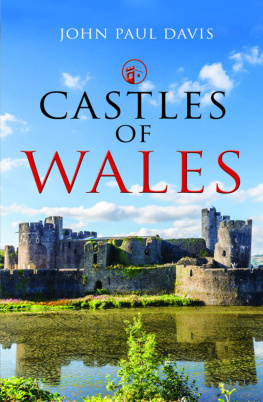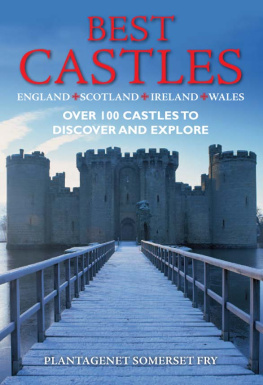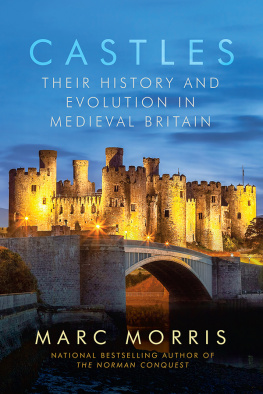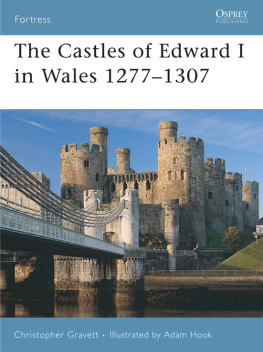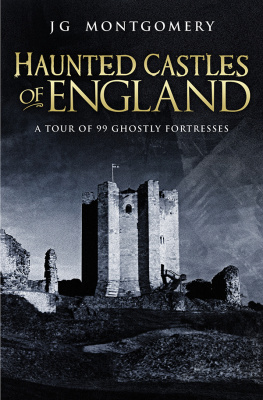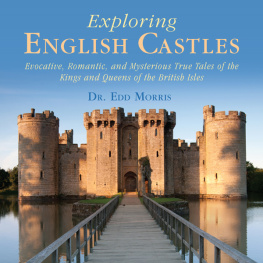ROUTLEDGE LIBRARY EDITIONS: THE MEDIEVAL WORLD
Volume 27
THE CASTLE IN ENGLAND AND WALES
THE CASTLE IN ENGLAND AND WALES
An Interpretive History
D. J. CATHCART KING
First published in 1988 by Croom Helm Ltd
This edition first published in 2020
by Routledge
2 Park Square, Milton Park, Abingdon, Oxon OX14 4RN
and by Routledge
52 Vanderbilt Avenue, New York, NY 10017
Routledge is an imprint of the Taylor & Francis Group, an informa business
1988 D. J. Cathcart King
All rights reserved. No part of this book may be reprinted or reproduced or utilised in any form or by any electronic, mechanical, or other means, now known or hereafter invented, including photocopying and recording, or in any information storage or retrieval system, without permission in writing from the publishers.
Trademark notice: Product or corporate names may be trademarks or registered trademarks, and are used only for identification and explanation without intent to infringe.
British Library Cataloguing in Publication Data
A catalogue record for this book is available from the British Library
ISBN: 978-0-367-22090-7 (Set)
ISBN: 978-0-429-27322-3 (Set) (ebk)
ISBN: 978-0-367-20815-8 (Volume 27) (hbk)
ISBN: 978-0-429-26359-0 (Volume 27) (ebk)
Publishers Note
The publisher has gone to great lengths to ensure the quality of this reprint but points out that some imperfections in the original copies may be apparent.
Disclaimer
The publisher has made every effort to trace copyright holders and would welcome correspondence from those they have been unable to trace.
THE CASTLE IN ENGLAND AND WALES
An Interpretative History
D.J. CATHCART KING
1988 D.J. Cathcart King
Croom Helm Ltd, Provident House,
Burrell Row, Beckenham, Kent
Croom Helm Australia, 44-50 Waterloo Road,
North Ryde, 2113, New South Wales
British Library Cataloguing in Publication Data
King, D.J. Cathcart
The castle in England and Wales: an interpretative history.
1. Castles England History
I. Title
942DA660
ISBN 0-7099-4829-8
First published in North America
in 1988 by
Areopagitica Press, Inc.
9999 S.W. Wilshire
Portland, Oregon 97225, USA
Library of Congress Cataloging-in-Publication Data
King, David James Cathcart.
The castle in England and Wales: an interpretative history / D.J. Cathcart King.
p. cm.
Includes index.
ISBN 0-918400-08-2
1. Castles England History. 2. Castles Wales History. 3. Fortification England History. 4. Fortification Wales History. 5. England Antiquities. 6. Wales Antiquities. 7. Great Britain History, Military Medieval period, 1066-1485.
I. Title.
DA660.K543 1988
Typeset by Leaper & Gard Ltd, Bristol, England
Printed and bound in Great Britain by Mackays of Chatham Ltd, Kent
Contents
Since this work formed part of the same study as my Castellarium Anglicanum of 1983, I must express my indebtedness to very much the same list of antiquaries; unhappily, death has removed several of these: my good friend Professor John Beeler of South Carolina, the superb medievalist Pierre Hliot, and my excellent adviser on Crusading matters, Dr R.C. (Otto) Smail of Sidney Sussex College, Cambridge. I am still indebted to Douglas Hague, Dr A.H.A. Hogg (my partner in the enumeration of castles in Wales and the Marches), C.N. Johns, Dr Ralegh Radford, Dr Derek Renn, Jack Spurgeon, Dr Arnold Taylor and Andrew Saunders (a pair of worthy Chief Inspectors), also Andr Chatellain, my continuator in Castellarium, John Kenyon and Beric Morley. Having lost Otto Smail, I am the more dependent on His Honour Judge Perks and on Professor Leslie Alcock of Glasgow University; he it is in particular who has encouraged me t;o publish the present volume, and acted rather as my supervisor, as if I were returned to my post-graduate youth a happy time.
Correction
In dealing with the timber transoms across the openings of many gunports of the fifteenth and sixteenth centuries, I had written (p. 166) the subject is one which has hardly been studied at all in English. This was entirely unfair to Stewart Cruden, whose The Scottish Castle (Edinburgh and London, 1960) contains on pp. 216-17, 219, a study of the transoms (cills) and the hook-muzzled guns which were used from them.
Until Henry VIIIs great programme of defence, Scotland was far in advance of England in terms of artillery fortification.
In the course of preparing a catalogue raisonne, with its attendant bibliography, of the castles of England and Wales which has appeared in print as Castellarium Anglicanum (Kraus-Thomson, New York, 1983) the author acquired a considerable knowledge of the subject of medieval fortification. He had also become acquainted with foreign castellation through the meetings of Chteau-Gaillard and the Fortress Study Group, as well as having had the honour of serving His late Majesty in the land of the Crusades.
The resulting information was offered for publication in a number of chapters, along with the catalogue and bibliography, and was (not surprisingly) refused, the publishers having already quite enough on their plates, in the shape of the two bulky volumes of Castellarium Anglicanum. These chapters, in fact, were accepted as part of the Great Unpublished, when Professor Leslie Alcock of Glasgow, who had read them, and reckoned them the most significant part of these labours, suggested that they deserved to appear in print.
Any book on castles is likely to start with a discussion of what a castle is, and so much has been written on the matter elsewhere that it is desirable to be very brief here. Typically, a castle was a fortified habitation; I would use the word residence if this did not suggest a gracious and comfortable dwelling, at least by the standards of its time, whereas very many castles by no means qualify for that character. Nor, for that matter, were their owners necessarily resident in their castles for much of the time, or even for any of it. Some castles, particularly among those belonging to the king or his greater subjects, were ordinarily inhabited by an officer.
It is in some ways easier to say what a castle is not. It is not a building without defences, or without defences which could have been held against a serious attack. This last expression is not capable of exact definition, and individual examples in the complete spectrum of the less powerful buildings can only be classed as weak castles or strengthened dwelling-houses by individual acts of judgment and individual judgments vary. At least we can set aside, as something less than castles, such rustic defences against theft as homestead moats and the little stone houses of the Scottish border which are called bastles.

